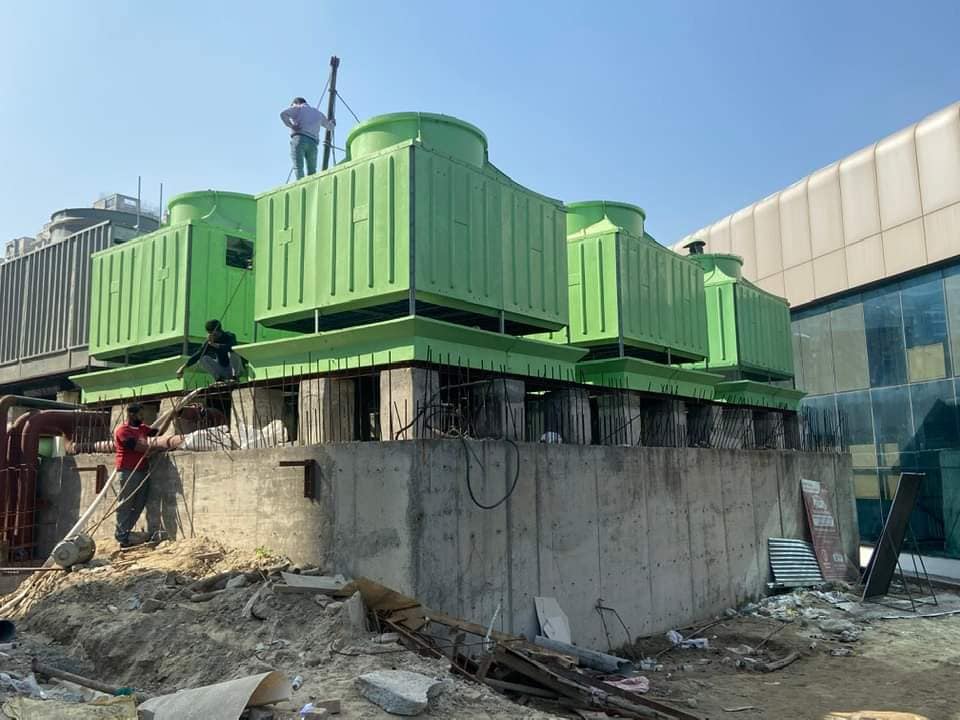Open (Wet) vs. Closed-Circuit (Dry) Cooling Towers: Key Differences
| Feature | Open (Wet) Cooling Tower | Closed-Circuit (Dry) Cooling Tower |
| Cooling Method | Evaporative cooling (water exposed to air) | Sensible cooling (fluid isolated in a sealed coil) |
| Water Usage | High (evaporation + drift + blowdown) | Minimal (only in hybrid models with adiabatic spray) |
| Efficiency | High (cools to near wet-bulb temperature) | Lower (limited by dry-bulb temperature) |
| Energy Consumption | Lower (fans + pumps only) | Higher (larger fans needed for same capacity) |
| Maintenance | Intensive (water treatment, scaling, biofouling) | Low (no water treatment, less corrosion) |
| Legionella Risk | High (open water system) | None (fluid is sealed) |
| Footprint | Compact | Larger (more surface area needed for air cooling) |
| Initial Cost | Lower | Higher |
| Lifespan | 15–20 years (with maintenance) | 20–30+ years (less degradation) |
| Applications | Power plants, refineries, large HVAC | Data centres, hospitals, water-sensitive processes |
Key Takeaways: Which One to Choose?
Choose an Open (Wet) Cooling Tower If:
- High cooling efficiency is critical (e.g., power plants).
- Water availability is not an issue.
- Lower upfront cost is a priority.
- Space is limited (compact design).
Choose a Closed-Circuit (Dry) Cooling Tower If:
- Water conservation is required (arid regions, zero-discharge policies).
- Process fluid must stay clean (e.g., medical, food, or data centre cooling).
- Low maintenance is preferred (no water treatment, less corrosion).
- Legionella risk must be eliminated (hospitals, public buildings).
Hybrid Option?
For a balance between water savings and efficiency, consider:
- Adiabatic-assisted dry coolers (spray water only during peak heat).
- Hybrid wet/dry towers (switch modes based on weather).
Need help deciding? Ask about:
- Lifecycle cost comparisons
- Retrofit options for existing systems
Climate-specific recommendations
